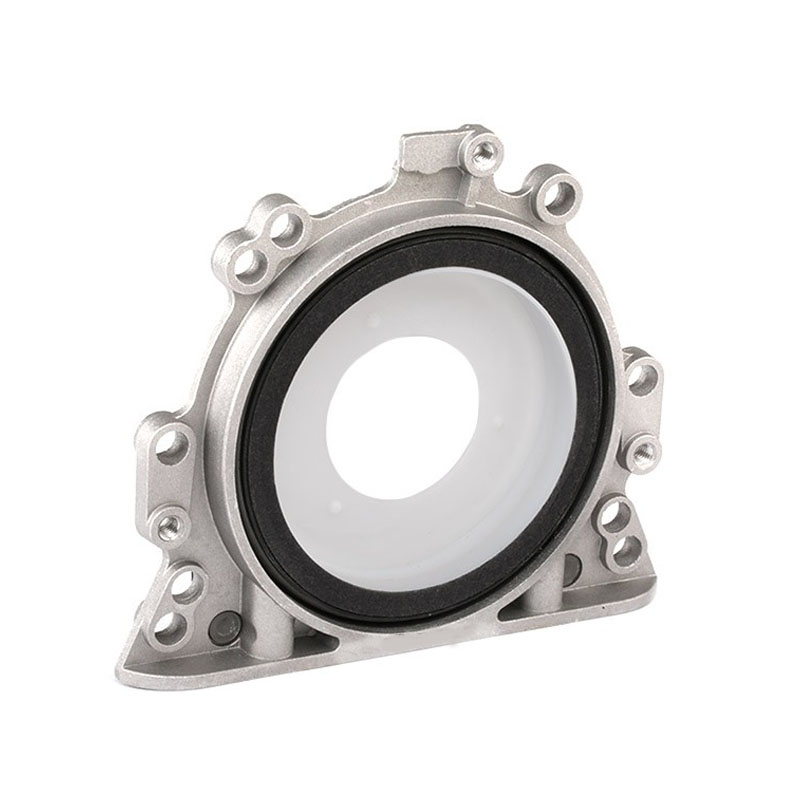Understanding the Functionality and Operation of Oil Seals in Machinery
The Working Principle of Oil Seals
Oil seals, also known as lip seals, are essential components in various machinery and automotive applications. Their primary function is to prevent the leakage of lubricants and the entry of contaminants into the mechanical systems. Understanding the working principle of oil seals is crucial for anyone involved in mechanical design, maintenance, or repair.
Structure of Oil Seals
An oil seal typically consists of three main parts the sealing lip, the outer casing, and a spring. The sealing lip is made of elastomeric materials such as rubber, which provides the necessary flexibility and resilience. The outer casing, usually made of metal or reinforced rubber, helps to secure the seal in its designated position within the housing. The spring, often positioned around the sealing lip, plays a crucial role in maintaining the contact pressure against the shaft or housing, ensuring a tight seal.
Working Principle
The working principle of oil seals revolves around the contact between the sealing lip and the rotating shaft or stationary housing. When installed, the sealing lip conforms to the surface against which it is pressed, creating a barrier that minimizes the escape of lubricants and the ingress of dust, dirt, and moisture.
As the shaft rotates, the lip of the seal is pushed against its surface. The flexible nature of the elastomeric material allows the lip to maintain contact even as slight variations occur due to wear or thermal expansion. This contact creates a thin film of lubricant that reduces friction and wear, while the elastic recovery of the material ensures that the lip returns to its original shape.
Sealing Mechanism
oil seal working principle

The effectiveness of an oil seal can be attributed to its design and the materials used. The sealing lip is typically designed with a specific angle and profile to enhance sealing performance. This design prevents the leakage of oil by creating a pressure differential. Inside the rotating system, there is a high pressure caused by the lubricant, while the outside environment generally has lower pressure. The lip seal resists this pressure, maintaining a tight seal and preventing leakage.
Moreover, the spring enhances this sealing action by exerting continuous force on the lip against the shaft. This ensures that any wear or deformation that occurs over time does not compromise the seal’s integrity. The effectiveness of an oil seal over time is due to this combination of mechanical design and material elasticity.
Applications
Oil seals are widely used across numerous industries, including automotive, aerospace, manufacturing, and many others. In automotive applications, they are commonly found in engines, transmissions, and differential assemblies. Here, oil seals prevent the leakage of engine oil and transmission fluid, contributing to the overall efficiency and longevity of the vehicle.
In rotating machinery, oil seals help in maintaining the lubricant within bearings and other critical components while keeping contaminants at bay, ultimately reducing maintenance costs and enhancing performance.
Conclusion
Understanding the working principle of oil seals is essential for ensuring the efficiency and longevity of mechanical systems. Their ability to prevent leakage and protect against contaminants makes them invaluable in various applications. By maintaining a proper seal, oil seals not only facilitate the smooth operation of machinery but also contribute to significant cost savings in maintenance and operation. As technology advances, the design and materials of oil seals continue to improve, ensuring that they meet the increasingly demanding requirements of modern engineering.
-
Understanding Automotive Oil Seals: Essential Components for Engine and Shaft Protection
News Jul.30,2025
-
The Importance of Heavy Duty Seals in Industrial and Residential Applications
News Jul.30,2025
-
Exploring Industrial Oil Seals: From Felt Oil Seals to TTO and CFW Solutions
News Jul.30,2025
-
Essential Guide to Oil Seals: From Radial to Metal-Cased Seals for Industrial Reliability
News Jul.30,2025
-
Choosing the Right Oil Seals and Gaskets for Industrial and Automotive Applications
News Jul.30,2025
-
Cassette Seals: Durable Sealing Solutions for Harsh Environments
News Jul.30,2025
-
Understanding the Front Main Engine Seal: Purpose, Maintenance, and Installation
News Jul.29,2025
Products categories















